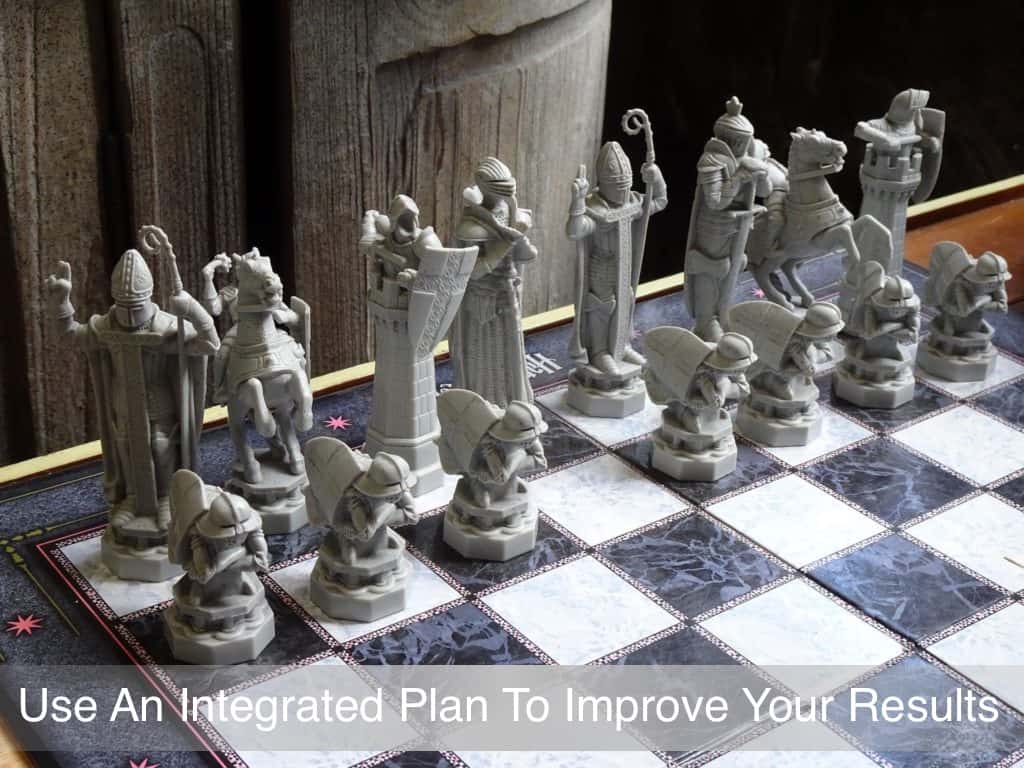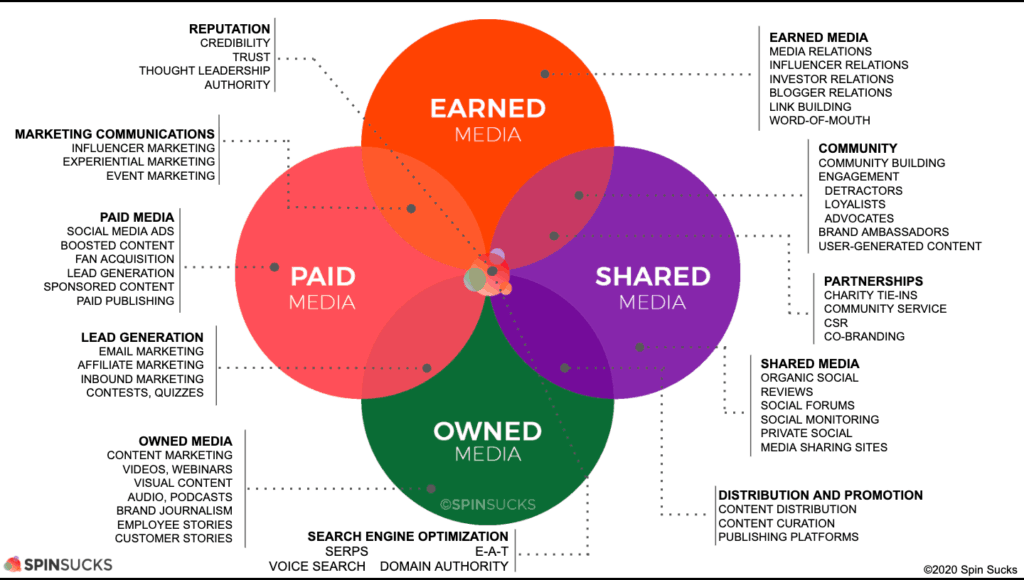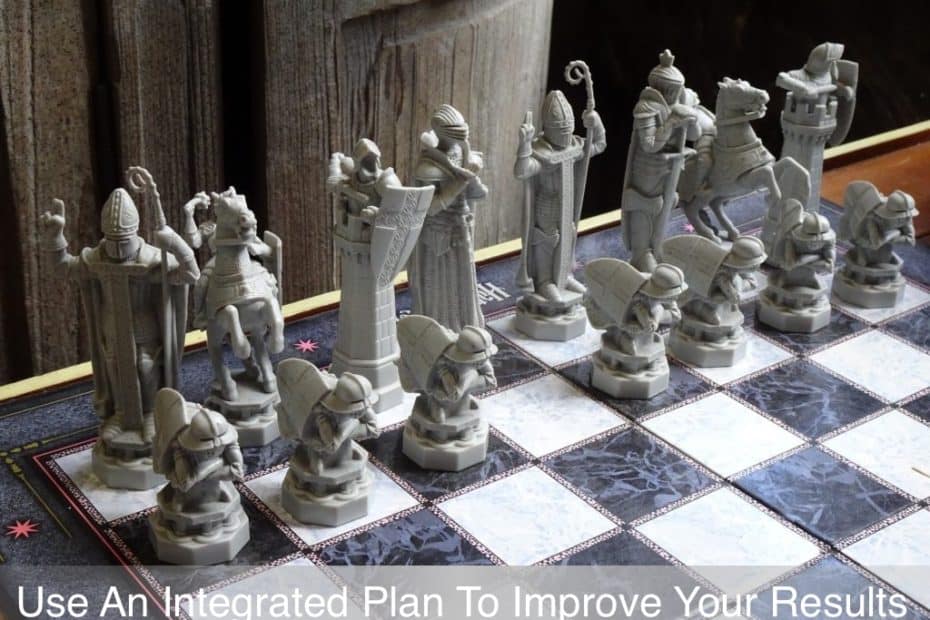
An integrated plan can seem daunting because it has more elements but the results make it a worthwhile investment if it’s done right.
While there are marketers who focus on niches such as Facebook ads, LinkedIn, or SEO, they miss the bigger picture. These areas are all valid and I appreciate the expertise these people bring but an integrated plan gives the best opportunity for businesses and non-profits.
There are certainly many opinions out there besides mine.
Email is dead so focus on chatbots. Nobody reads anymore so kill your blog and focus on video or podcasts. You should be on Instagram, not Facebook. Search engine optimization (SEO) isn’t important anymore, it’s about social media marketing.
So who is right and who is wrong? Well, it depends. They are all kind of right and they are all kind of wrong. All these things can help but they work so much better together than I alone.
I look at an integrated plan the way I would look at a team. The quarterback may get all the glory but if the other ten guys aren’t there, it doesn’t really matter how great your quarterback is, your team is going to lose. Every piece has a function to help the whole get to where it needs to be.
What is an Integrated Plan?
After I had graduated from school I applied for a public relations (PR) position with a company. They sent me an activity to see if I was qualified which was to create an Integrated Marketing Communication (IMC) plan for a company’s product.
I had to google IMC because I’d never heard of it before. Not a good sign for the test I needed to take.
I didn’t get the job, which wasn’t a surprise, but I realized my education was incomplete. I went to Amazon and bought a textbook on IMC. A few years later, I discovered the PESO model which really helped me put it all together in a way that made complete sense to me (more on PESO in a minute).
So, what is an integrated plan and why should you use it?
I define an integrated plan as follows: When multiple pieces of marketing communication (a combination of digital marketing and public relations), work together to reach a common goal.
Essentially, you are using different channels to reach out to people in a strategic way to help you reach a business goal.
There are many avenues available to us and you are probably are already engaging in some of them. Chances are your organization has at least one social media account. There is also a pretty good chance that you have run a digital ad and have a website.
While your organization may be engaging in and have plans for these different pieces, this doesn’t mean you have an integrated plan. For it to be integrated, every piece needs to work towards a common goal. That’s the key.
Let’s say that you’re part of an e-commerce organization such as Amazon. People buy the product on the website. With an integrated plan, social media, digital ads, and media efforts focus on pushing people to the website which itself is set up to convert that person to a customer.
Each piece may have its own objective but they work together to achieve the goal of getting the sale.
The PESO Model
PESO is a great example of an integrated model. Developed by Gini Dietrich at Spin Sucks, it breaks down marketing and public relations efforts into four categories:
- Paid Media
- Earned Media
- Shared Media
- Owned Media

Paid media is digital ads. They can be ads on social media such as Facebook, Instagram, LinkedIn, Twitter, or Snapchat. Retargeting ads that you see on websites and ads you see in your search results on sites such as Google would also fall under paid media. This type of media is typically used to generate awareness and interest.
Earned media is better known to most people as media relations. It is typically associated with public relations and is the act
Shared media is better known as social media. We call it shared media because social media networks lend themselves to sharing information such as blog posts, videos, and other social media messages. Shared media will help you create awareness and interest.
Owned media is content in which you own the message and the channel. There are only two things you own: your website and your email list. This is where you can create interest, consideration, and in the case of e-commerce, make a sale.
I use this model because it combines all the elements of digital marketing and public relations. Better yet, it allows you to measure results. This means you aren’t guessing on what the impact is and you can see your return on investment.
Integrated Plans Have More Impact
There is nothing to stop you from looking at the PESO model and deciding to only focus on one area such as earned media. Of
While PESO lays out the elements the key to it being an integrated model is to treat it as such. This means using each of the four areas in a way to help you reach a common goal.
Some of you may be thinking, “I get good results without an integrated plan.” That’s great but I would suggest that you are missing opportunities to get even better results.
If your objective is to get more leads and you’re only using Facebook, you’re missing out on the power of digital ads which can drive traffic through the initial ads and through retargeting ads. You are also missing out on earned media sending traffic to your site and helping your SEO efforts. If you don’t have the right content on you’re website it will be hard to turn your traffic into leads.
I don’t want to give you the impression that you should be everywhere. This isn’t good advice. It harkens back to the old days of advertising where the goal is to get in front of as many people as possible.
This isn’t a good strategy anymore. Not only is it expensive as far as cash expenditures but you will need to invest in the manpower do it right.
An Integrated Plan Example
Let’s use the e-commerce example from earlier. The goal is to improve sales by 5% this year. The only way to do this is by driving more traffic to the website so we can have an opportunity to convert it to sales.
First, you want to focus on the website (owned media) because it is where you do business. You want to make sure it is optimized for search engines. Marketing funnels need to be set up so people are being driven towards converting to customers/sales. The content needs to be helpful and interesting for customers so it can push them from the interest stage to the consideration stage to a sale.
Social (shared media) needs to have messaging that will create awareness and interest to drive people to the website. Don’t forget to set up the share buttons so people can easily share content they like from your website. You also need to address some intangibles such as how to address customer service issues and building relationships with our customers. This will help build loyalty and help with retention.
Earned media opportunities need to be explored as they create awareness, interest, and drive people to the website. They will also help with your overall SEO efforts by getting backlinks.
Finally, digital ads (paid media) will be used to create awareness, interest, and drive traffic.
As you can see, you now have multiple ways to drive traffic and push prospects through the marketing funnel to becoming a customer.
The new mantra is to have the right piece of content for the right person at the right time. With an integrated model, you have multiple options to break through and reach your desired customer.
Marketing Communication is Always Changing
The only thing that is certain is change. What works today may not work tomorrow. A simple tweak to an algorithm by Google can have a big impact on your SEO. Facebook tweaking its algorithm can seriously impact potential customers finding you and even the impact of your ads.
Integrated planning helps us see where we have opportunities. If Facebook announces a change that we know will negatively impact our organic results, we can look in other areas to compensate. It may mean increasing our paid media efforts or focusing more heavily on SEO.
With an integrated plan, you are not only increasing the chances of reaching customers. You are making an investment in multiple areas to guard against your efforts being destroyed if something changes.
Final Thoughts
There are many ways to reach customers to create awareness and interest. If you are only using one way, such as social media, you’re missing multiple opportunities.
To get the most out of your marketing communication plans embrace opportunity and employ an integrated plan model.
I know it can be a daunting task to move to an integrated plan. That’s why we are here to help guide you. If you have questions on how an integrated plan can help your business we would love to talk to you to see how we can help you. Simply contact us here.
- The Importance of Creating a Connection With Your Marketing - June 6, 2024
- Reach vs Visibility: Which is Right for Your Marketing? - February 13, 2024
- Focus Your Marketing Efforts By Saying “No” - December 13, 2023

